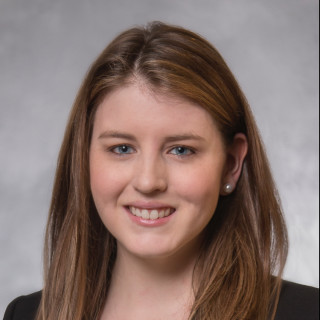“Occipital skull fracture.” Those three simple words were enough for an entire medical team to form a strong bias and anchor on one diagnosis: nonaccidental trauma.
While working in the ICU, our team had a baby admitted from the ER for status epilepticus. From the instant this patient arrived at the hospital, there was concern for abusive head trauma. The CT scan from the outside hospital, which correlated to the in-house CT scan, showed a diffuse subarachnoid hemorrhage in both brain hemispheres, diffuse cerebral edema, and a nondisplaced occipital skull fracture. While many etiologies could explain the intracranial findings, that skull fracture made abusive head trauma a much higher priority on the differential.
The backstory seemed to fit as well. The parents were young and didn’t present for prenatal care until late in the third trimester. They had noticed for days that their baby did not want to eat, had a fever, and had possible seizure-like episodes at home, yet had not sought medical attention until a scheduled PCP visit. Despite paternal denial of any trauma or shaking, this story seemed to fit most closely with nonaccidental trauma.
Throughout this baby’s admission, the team, including myself, anchored on this diagnosis with confidence that, despite what the parents said, head trauma somehow figured into this clinical picture. In these emotionally charged situations, it is understandable how hard it is for medical providers not to feel confusion, despair, and unease at how to empathize with the parents — to comfort them, to treat them like any other parent. Unfortunately, despite all medical interventions, the baby's brain herniated.
Several days later, the medical examiner’s report came back, revealing the cause of death to be florid meningitis, not abusive head trauma. That apparent occipital skull fracture was instead an accessory suture. To say I was shocked is an understatement.
How could this be true? The history seemed to match up perfectly with the findings. We, the baby’s doctors, were wrong. The parents and family were actually telling the truth. I spent so much time reflecting not only on this revelation, but also on how the family was treated; how, because of our diagnosis, this family might have felt judged for an action they never committed.
This, sadly, is the perfect example of anchoring bias in medicine, where clinicians rely too much on preexisting information or the first information obtained when making decisions. That initial CT head and those three words, “occipital skull fracture,” led to a strong consideration of nonaccidental trauma. Because of the baby's critical status, a lumbar puncture to assess and rule out meningitis could not be attained. We had preemptively started broad spectrum antibiotics/antivirals upon admission, but that did not deter our confidence in our diagnosis of abusive head trauma.
Looking back at the history now, meningitis was a strong possibility: late prenatal care, maternal infection during pregnancy, increased rectal temperature at home, decreased oral intake. Though, in this case, treatment could not have reversed the already severe damage that had been done, if our team had not anchored on the diagnosis of nonaccidental trauma, we may have treated the family differently. We could have empathized with them and comforted them more in the setting of their very sick baby. We could have rationally understood that youth, lack of health literacy, and limited parental experience are what delayed them from seeking medical attention. They did not know that a fever in a baby was a medical emergency, or that those shaking episodes at home were seizures.
I now know firsthand how anchoring bias can prevent physicians from seeing all perspectives of a case. Yes, we are taught that anchoring bias can lead to incorrect diagnoses or could delay physicians from discovering the correct diagnosis. However, as this case demonstrated, just three words can lead to a biased perception of a family and decreased empathy for them. It is the physician’s responsibility not only to be aware of but also to overcome these internal and external biases, as they can prevent us from providing optimal care and also compassion.
This was the most difficult time in this family’s life. They watched their child die. Every physician should comfort and provide support to any family during this time, despite personal feelings, despite knowing or believing that abuse could be involved. I firmly believe that we should always reverse roles and consider how we would feel if we were on the opposite end of things. Are we doing what we would want done for us?
Clinicians are not judges or juries; we do not know the whole story. We should focus on treating the family and patient as we would want to be treated by listening, respecting them, and having patience. We must remember the Hippocratic oath that we all made when graduating from medical school: “There is an art to medicine as well as science, and that warmth, sympathy, and understanding may outweigh the surgeon’s knife or the chemist’s drug.” Empathy is our greatest quality as physicians; when we lose our empathy we lose our humanity. We must strive to never allow anchoring to steal that away from us.
Have you encountered anchoring bias in a clinical setting? Share your experience in the comment section.
Kelsey Kirkman is a pediatric resident in Texas. Her interests include Neonatology and medical education.
Illustration by April Brust







